Tsukiji Fish Market
Tsukiji Fish Market - one of the biggest wholesale fish and seafood market, although here you can find any other product. Then buy goods as wholesalers and fish restaurants in the Japanese capital and ordinary buyers. The market is located in central Tokyo and is one of the main attractions for foreign tourists. On the day here sold about 2,888 tons of goods (more than 450 species of fish and seafood) in excess of 2.8 billion yen.
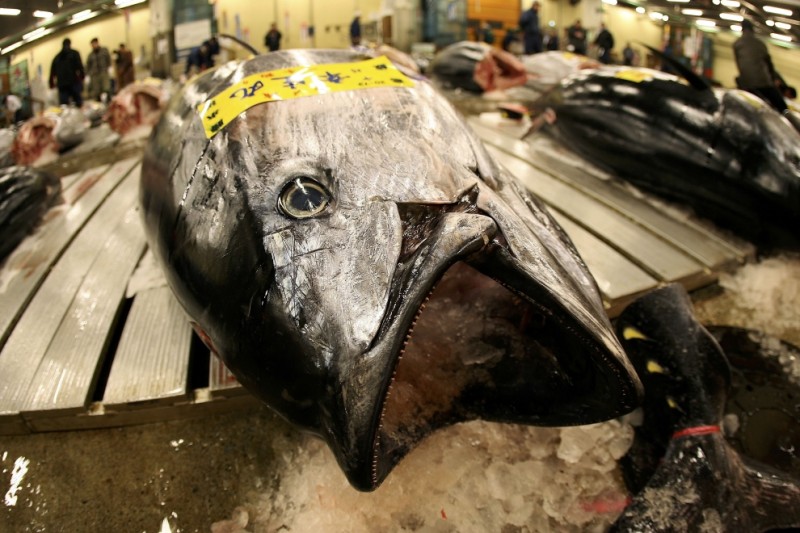
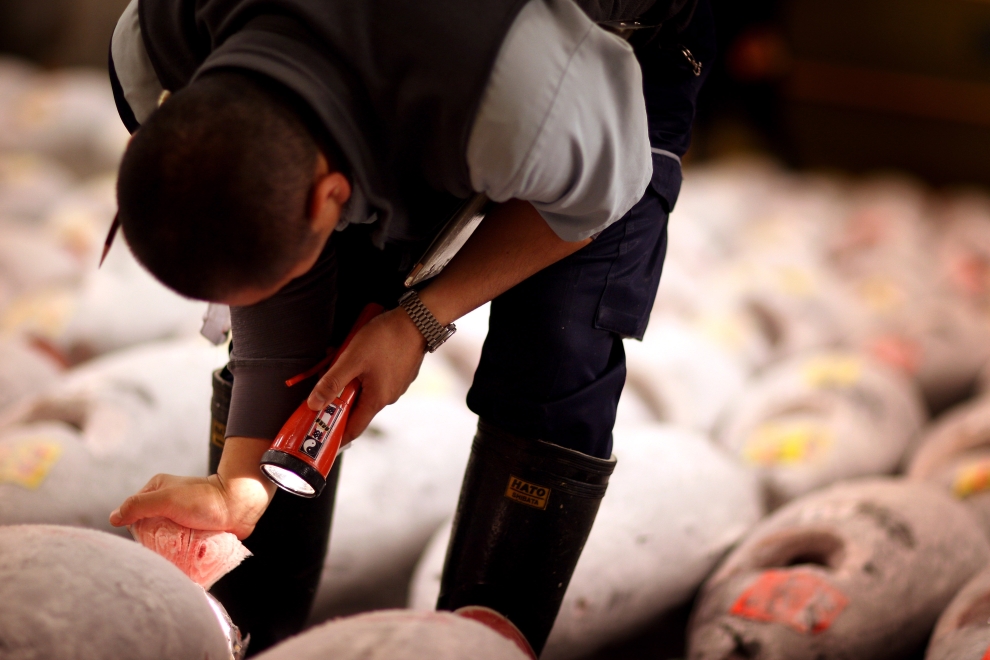
1 worker checks the quality of the fish for sale. (Photo: Chris Jackson / Getty Images)
Tokyo urban wholesale market, better known as Tsukiji
Fish Market is located next to the station and the Tsukiji subway
Tsukidzisidzё Tokyo.
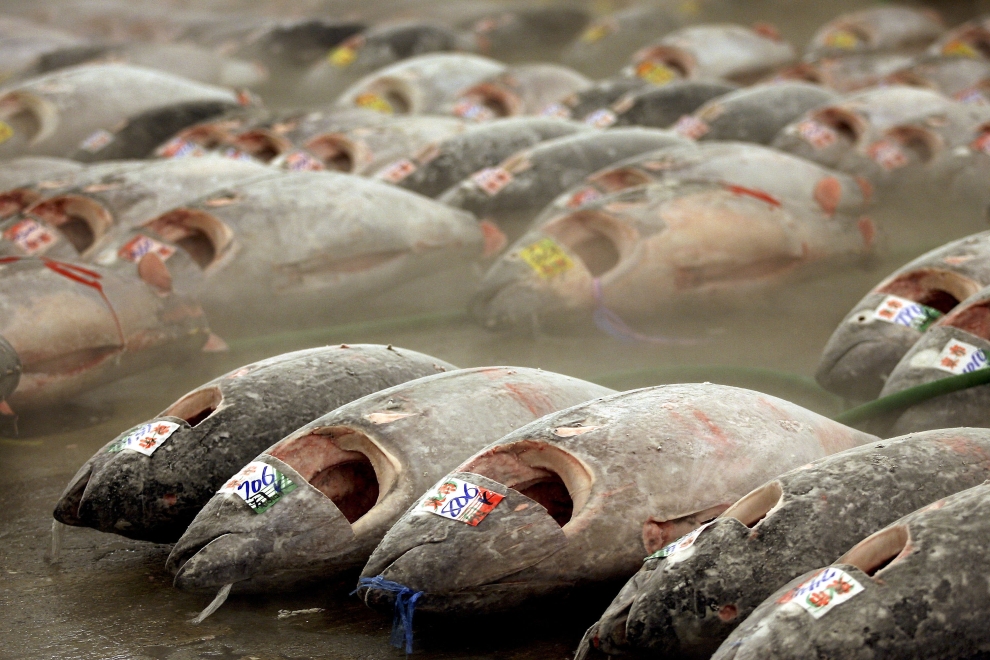
2 frozen tuna in anticipation of buyers during the auction before the New Year. (Photo: Koichi Kamoshida / Getty Images)
The market consists of two separate sections. The
so-called "internal market" (Jap. 場内 市場 jo: nai Shijo :?) is a licensed
wholesale market, where trades are conducted and fish processing takes
place, and where the trays are about 900 licensed vendors. On
the "outer market" (Jap. 場外 市場 jo: gai Shijo :?) can be found both
wholesale and retail shops that sell Japanese kitchen utensils ready
restaurant products, food products, and seafood.

3 The quality of fish products sold during the auction goes through several stages of verification. (Photo: Chris Jackson / Getty Images)
There is also a large number of restaurants, particularly specializing in the production of the land. Most of the shops in the foreign market closes before noon, and in the domestic even earlier.
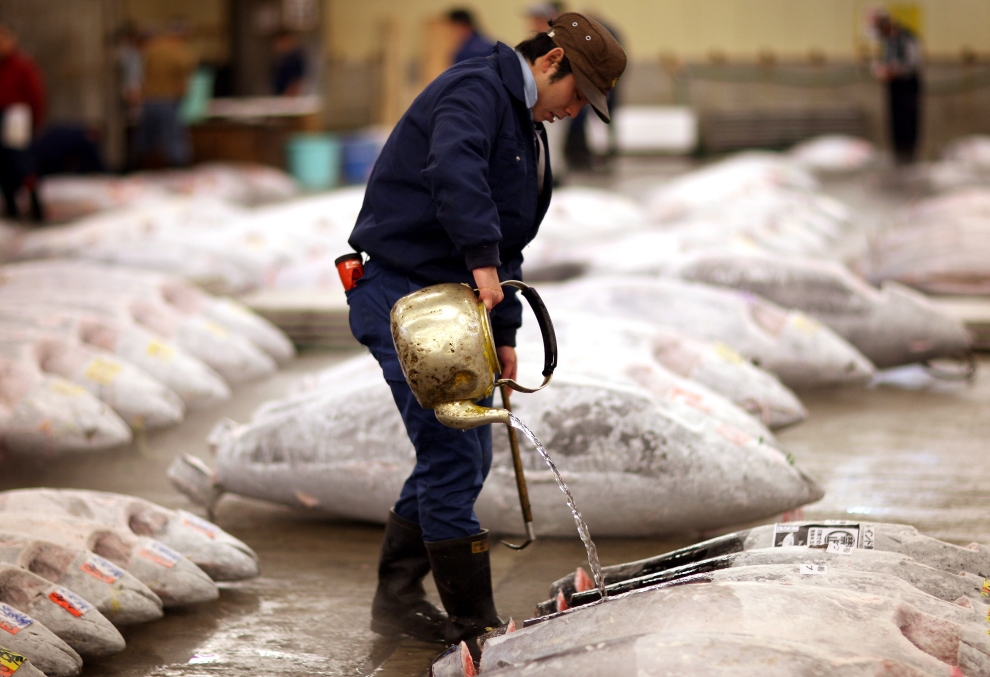
4 Frozen fish were thawed before the auction. (Photo: Chris Jackson / Getty Images)
In the market you can find more than 400 different types
of seafood, from small sardines to 300-kilogram tuna, from cheap seaweed
to expensive caviar.

5 One of the wholesalers exports out of the store bought items at the auction. (Photo: Koichi Kamoshida / Getty Images)
About 700 thousand. Metric tons of seafood pass through
the shelves of three fish markets in Tokyo, which in monetary terms is
600 billion yen (about 5.5 billion dollars). Directly through the Tsukiji fish market is held over 2 thousand. Metric tons of seafood per day.
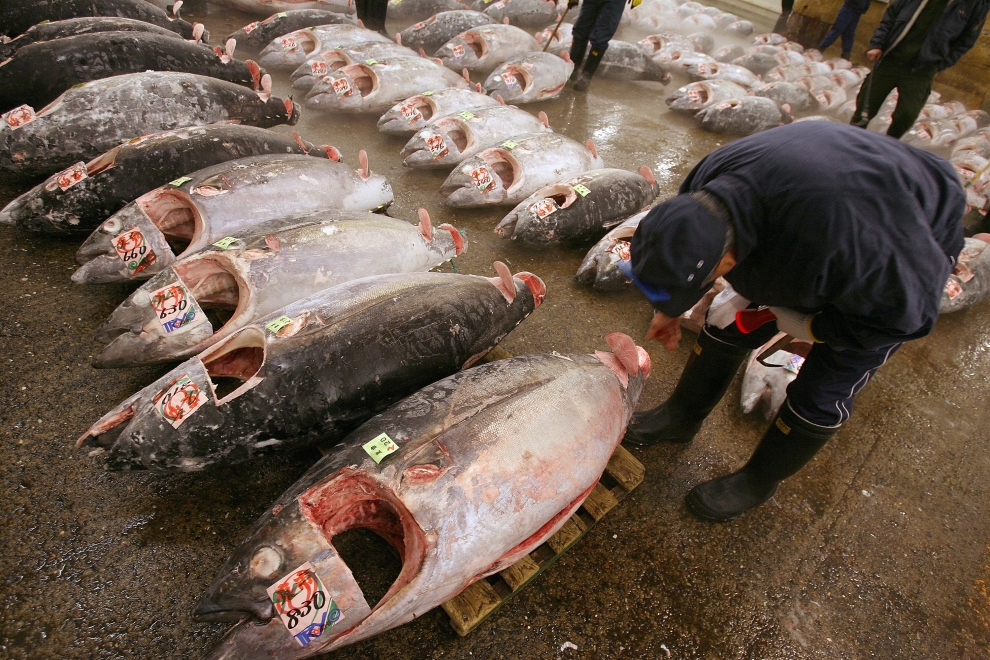
6 Wholesaler checks the quality of evisceration of carcasses of tuna. (Photo: Koichi Kamoshida / Getty Images)
The number of registered employees varies between 60 to
65 thousand. Persons, which include wholesalers, accountants,
auctioneers, company representatives and distributors.
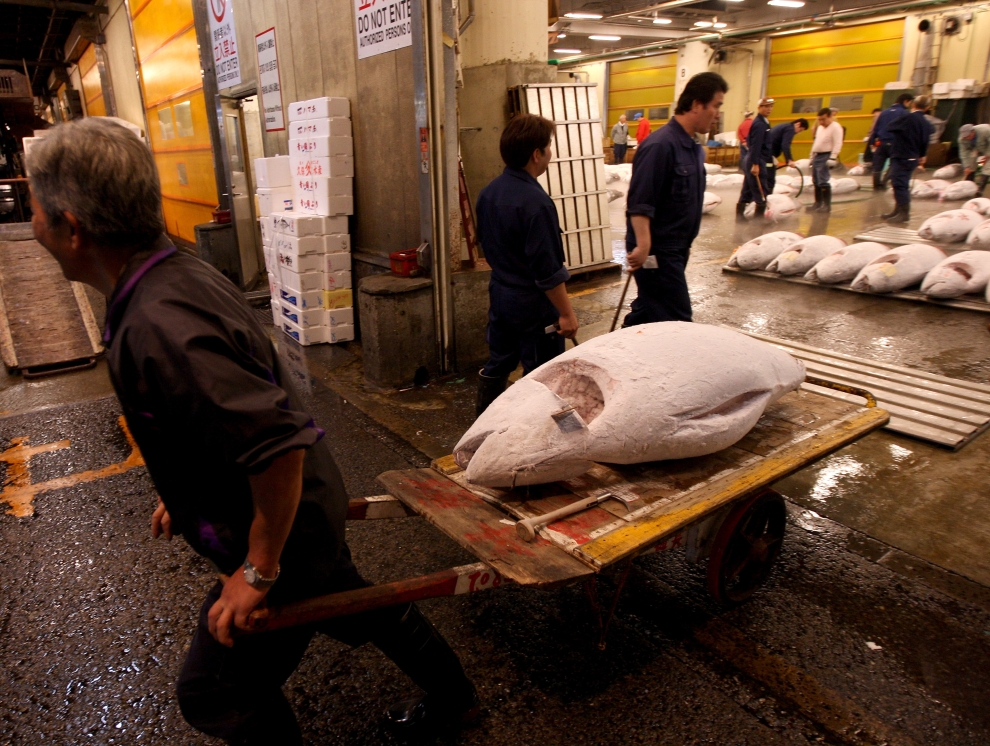
7 Employee market exports frozen carcass tuna stock. (Photo: Chris Jackson / Getty Images)
Tsukiji Market is open almost every morning, except
Sundays, holidays and the rare days with a break at the reception of the
goods, which begins at 3:00 in the morning. The most impressive thing is unloading frozen tuna.
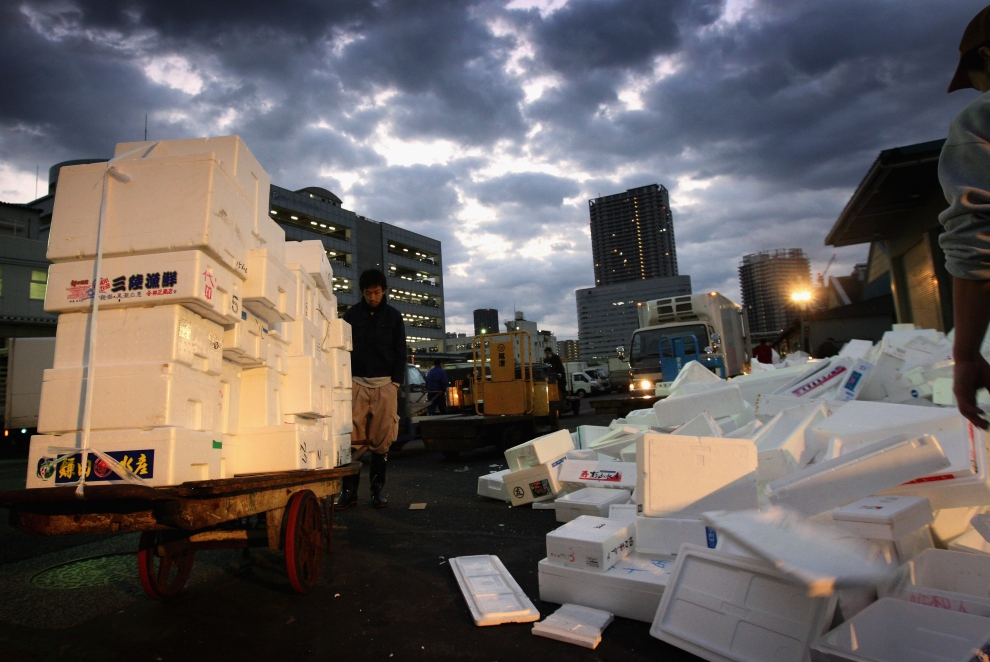
8 Worker market driven trolley with the packed seafood past piles of packaging material. (Photo: Chris Jackson / Getty Images)
After unloading, the auction houses (wholesalers in
Japanese called 卸 売 業 者 orosiuri gyo: Smiling) assess the value and
prepare the incoming items to the auction. Buyers (only
those who have a license to participate) also evaluated the party fish
in order to know for what they will fight to the highest bidder and what
price are willing to pay.
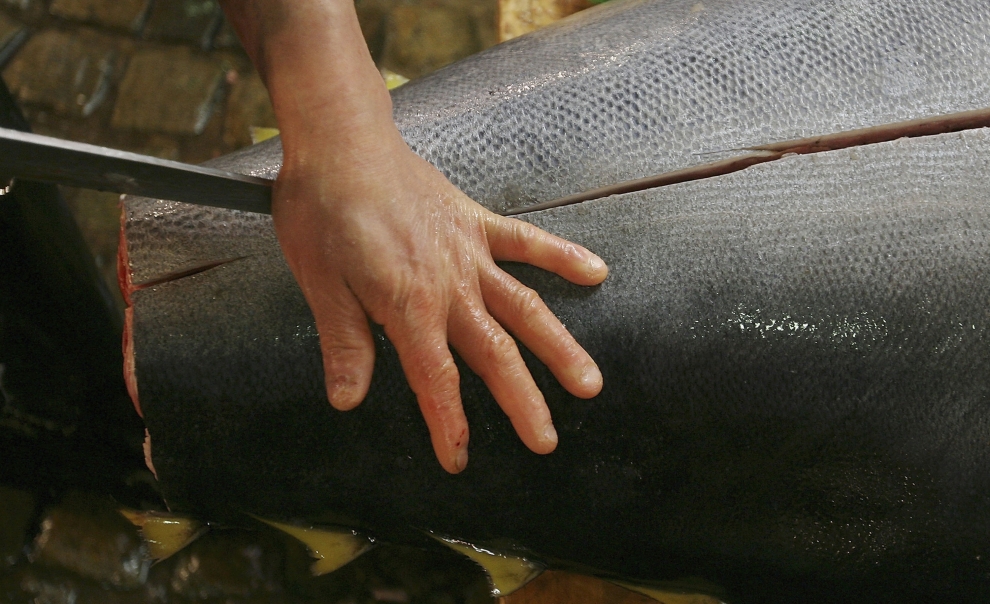
9 Employee market carcass cuts of tuna into smaller portions. (Photo: Koichi Kamoshida / Getty Images)
Bidding starts at around 5:00 in the morning. As
the number of buyers could include mediation Wholesalers (仲 卸 業 者
nakaorosi gyo: Smiling), that is, those who sell goods in the same
market, as well as buyers of commodities for restaurants, food
companies, and large retailers.
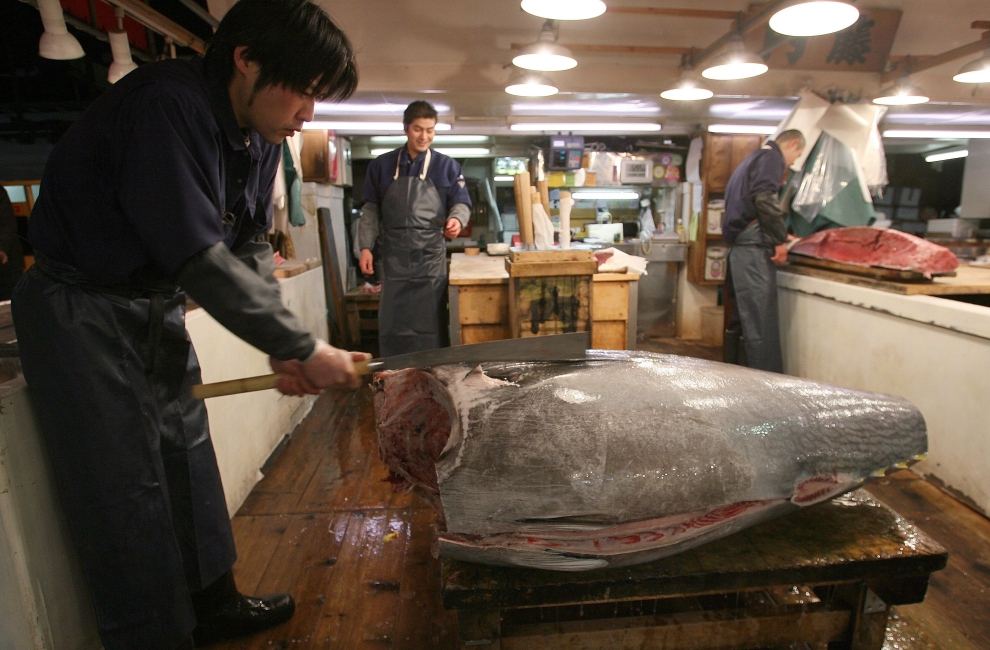
10 Cutting the fish carcasses. (Photo: Koichi Kamoshida / Getty Images)
Bidding usually end around 7:00 am. Then
bought fish or loaded onto ships for delivery to the next item
repetition, or on small carts transported to numerous shops inside the
market. Their owners are prepared and cut up fish for subsequent retail sale.

11 Adjournment of a cup of tea. (Photo: Chris Jackson / Getty Images)
Razdelyvanie large fish such as tuna or swordfish comes with special care. For
example, tuna is cut large bandsaw, and already cut parts - a very long
knife (sometimes up to 1 meter in length), which is called Orosi hotё
(Eng.) Hantё hotё or maguro-botё.
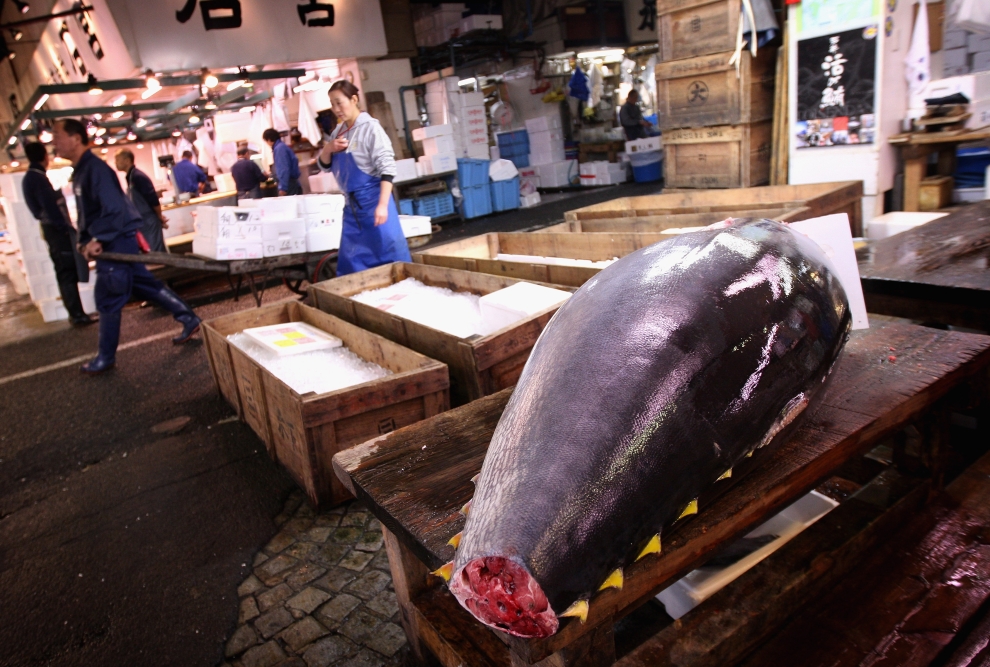
Carcass 12 yellowfin tuna, which will soon cut into smaller pieces. (Photo: Chris Jackson / Getty Images)
Most active in the market are usually from 5:00 am to 8:00 am, and then it declines sharply. Most shops and stores closed by 11:00 am, and the market of the day at 13:00. Tourists
can visit the market every day from 5:00 to 6:15 in the morning and
watch the work of the market and all transactions with a specially
designated area.
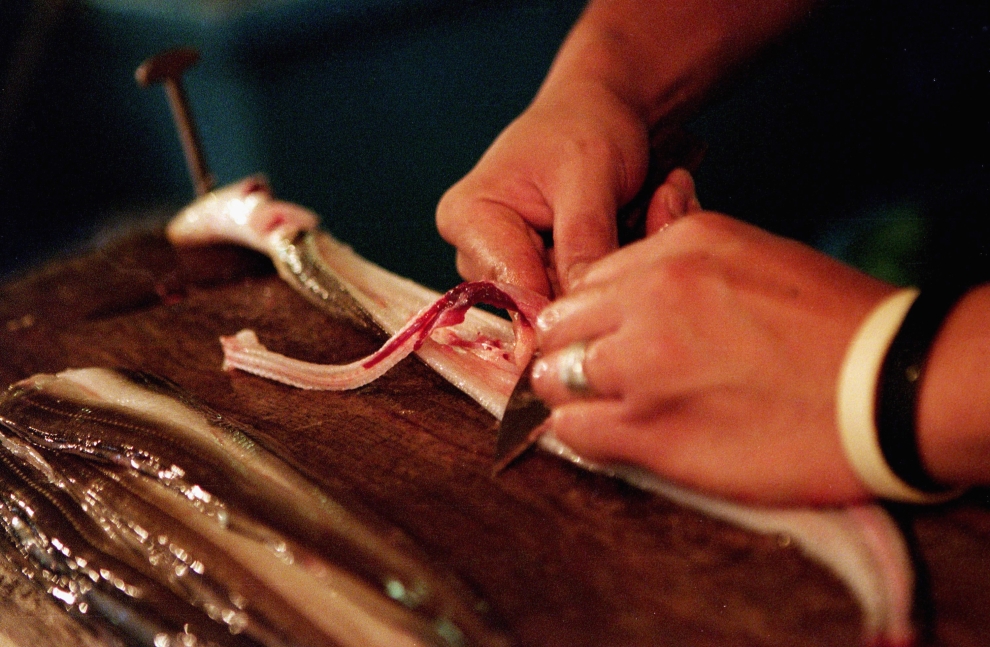
13 Fishmonger guts eel. (Photo: Cameron Spencer / Getty Images)
Compliance with the law of the purity of food should be inspectors from the Tokyo Metropolitan Government.

14 employee market pulls his cart through the narrow passages between the stalls. (Photo: Chris Jackson / Getty Images)
The first market in Tokyo was established Tokugawa Ieyasu
during the Edo period for provisions fortress Edo (modern Tokyo), who
invited for this purpose fishermen from Osaka. Fish, which
remained excessive, sold near the bridge Nihonbashi (Eng.) Marketed
under the name "uogasi» (魚 河岸, «Fishing Pier") - one of many of
specialized markets, which was connected by channels with the Edo period
(so called Tokyo to 1870h) .

15 Cutting fresh tuna before an auction on the eve of the New Year. (Photo: Koichi Kamoshida / Getty Images)

16 Cleaning the fish before selling. (Photo: Chris Jackson / Getty Images)
In August 1918, during the so-called rice riots, when
more than a hundred cities and towns protested against the lack of food
and the speculative activities of wholesalers, the Japanese parliament
was forced to build new facilities for trade in food, especially
affected the big cities.

17 waste after cutting fish. (Photo: Chris Jackson / Getty Images)

18 staff scurrying between market stalls. (Photo: Chris Jackson / Getty Images)
Central Wholesale Market was founded in March 1923. Great earthquake September 1, 1923 almost completely destroyed the central part of Tokyo with the market near Nihonbashi.

19 gutted eels prepared for transport. (Photo: Chris Jackson / Getty Images)

20 The whole tuna filled with ice. (Photo: Koichi Kamoshida / Getty Images)
Subsequently, the market was moved to Tsukiji district
and at the end of the construction of modern infrastructure was
completed in 1935 and started working at the Central Wholesale Market,
together with markets in the areas of Coto and Kanda. Now
Tokyo-based system of wholesale markets includes more than a dozen major
markets and their affiliates that sell seafood, meat and so on. D.

21 Reporters shoot story about the sale of the giant tuna to block the morning news. (Photo: Koichi Kamoshida / Getty Images)
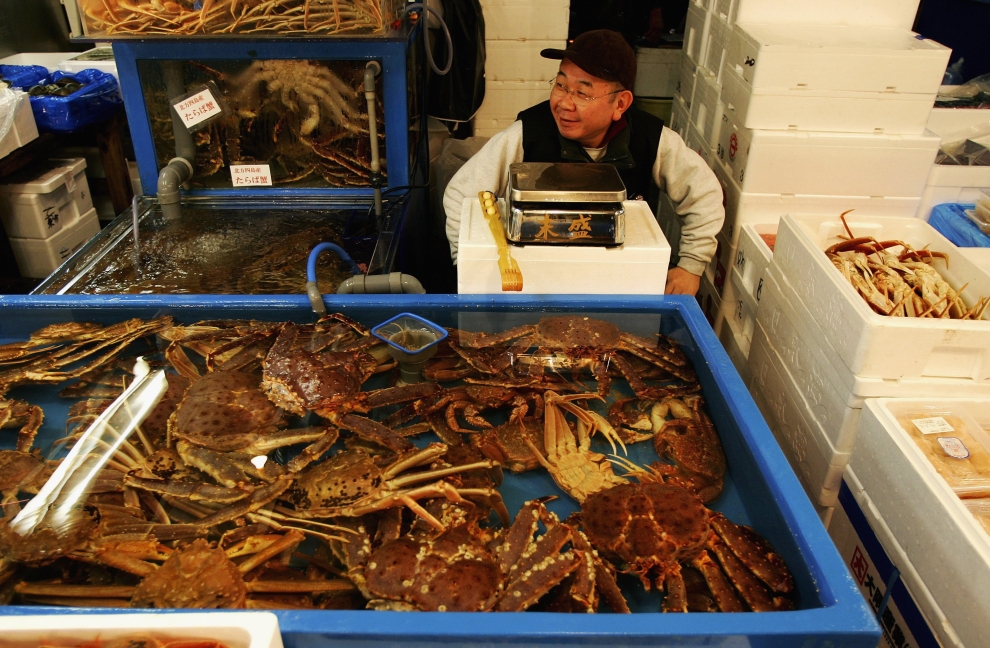
22 The seller waits for customers of containers with crabs. (Photo: Cameron Spencer / Getty Images)
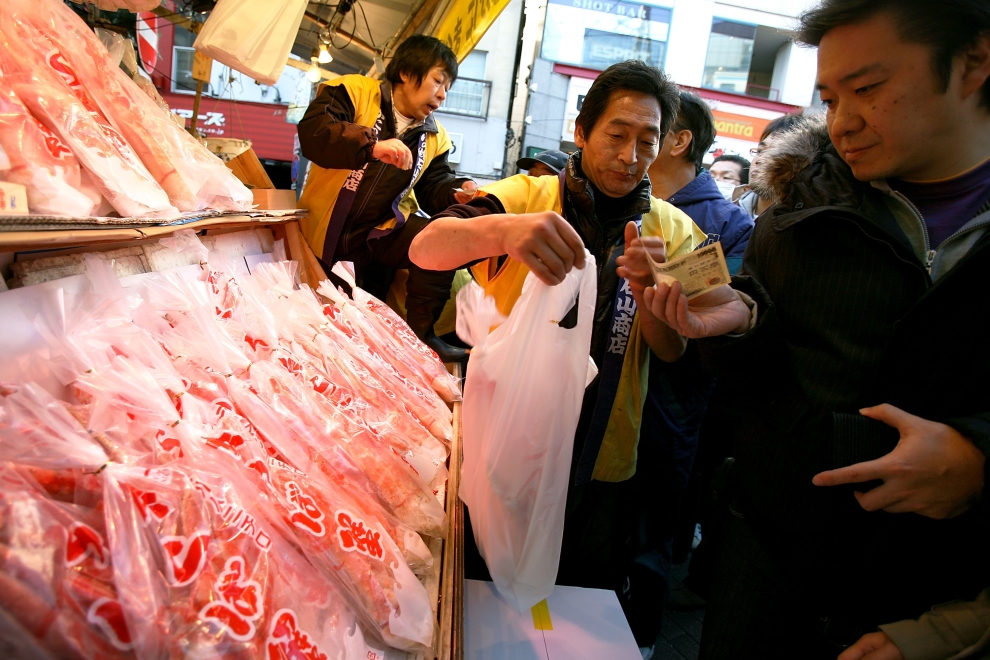
23 Tray, which laid packaged seafood for private buyers. (Photo: Kiyoshi Ota / Getty Images)

24 Sellers advertise their products. (Photo: Kiyoshi Ota / Getty Images)

























No comments:
Post a Comment